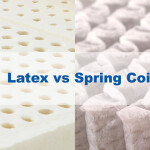Development of Obstructive Sleep Apnea
Sleep Apnea and Sleep
Obstructive sleep apnea is a disorder in which breathing is briefly and repeatedly interrupted during sleep. The "apnea" in sleep apnea refers to a breathing pause that lasts at least ten seconds. Obstructive sleep apnea occurs when the muscles in the back of the throat fail to keep the airway open, despite efforts to breathe. Another form of sleep apnea is central sleep apnea, in which the brain fails to properly control breathing during sleep. Obstructive sleep apnea is far more common than central sleep apnea.
Women and Sleep Apnea
Dr. Barbara Phillips — sleep expert, board member and past chair of the National Sleep Foundation — asked some noted experts about the unique challenges women face in being diagnosed with sleep apnea.
Dr. Phillips: Do you think women with sleep apnea are as likely to be diagnosed as men with sleep apnea are?
Grace W. Pien, MD, MS, assistant professor of medicine, divisions of Sleep Medicine and Pulmonary and Critical Care at the University of Pennsylvania School of Medicine: On the whole, I believe that women with sleep apnea are less likely to be diagnosed compared to men. In earlier studies of patients coming in for evaluation for sleep apnea, the ratio of men to women has sometimes been extremely lopsided, with 8 or 9 men diagnosed with apnea for each woman found to have obstructive sleep apnea (OSA). However, we know from studies in the general population that the actual ratio is likely to be closer to 2 or 3 men with OSA for each woman who has the condition. read more>>
Could My Child Have Sleep Apnea?
"Caleb was two when we first noticed his loud snoring," said Scott, Caleb's father. "We were alarmed but didn't really start to worry until we began hearing him gasp for air between the snores. That made my wife and me very uneasy.
Nine year old Matthew was significantly overweight. "We tried to exercise with him everyday, but just walking to the park made him so tired that he could hardly stand let alone play once he got there," said Claire, Matthew's mother. "He struggled just putting on his shoes on in the morning." Matthew told his doctor that he felt like he could never get enough sleep. "He snores louder than my grandfather," Claire added.
Both Caleb and Matthew were given sleep studies, and they were diagnosed with obstructive sleep apnea (OSA). A surgeon removed Caleb's tonsils, and Matthew was given a continuous positive airway pressure (CPAP) device with a child-sized mask. After his surgery, Caleb stopped snoring. Now the only noise from his room is the occasional laughter in his sleep. These days, Matthew leaps out of bed in the morning and has lost 25 pounds. "He's the child I always knew he could be," said Claire. read more>>
Sleep Apnea and Heart Disease
The connection between sleep apnea and heart disease is evolving very rapidly. People with cardiovascular problems such as high blood pressure, heart failure, and stroke have a high prevalence of sleep apnea. Whether sleep apnea actually causes heart disease is still unclear, but we do know that if you have sleep apnea today, the chance that you will develop hypertension in the future increases significantly.
One of the problems in defining the relationship between sleep apnea and heart disease is that people with sleep apnea often have other co-existing diseases as well.
If you treat people with high blood pressure and sleep apnea, or heart failure and sleep apnea, the measures of blood pressure or heart failure are significantly improved. There is good evidence to think there is a cause-and-effect relationship between hypertension and sleep apnea. read more>>
CPAP: Treating Sleep Apnea
Continuous Positive Airway Pressure (CPAP) is the leading therapy for sleep apnea. Patients wear a face or nasal mask during sleep. The mask, connected to a pump, provides a positive flow of air into the nasal passages in order to keep the airway open. Most insurance companies now pay for sleep testing and for CPAP treatment.
Dental appliances can be prescribed for mild sleep disordered breathing, but they are not effective for everyone with OSA. Doctors recommend weight loss for overweight people who snore or have sleep apnea, since weight loss may eliminate or significantly improve breathing during sleep. However, people who are not overweight can also be afflicted with sleep apnea due to the structure and makeup of their upper airway. read more>>
Learn more about how these medical devices can make a big difference in nighttime comfort for people with breathing issues.Sleep Apnea is a sleep disorder in which breathing is briefly and repeatedly interrupted during sleep. Learn how to cope with this sleep-related breathing disorder.A frequent need to get up and go to the bathroom to urinate at night is called nocturia. It differs...Nearly one-quarter of all workers have shifts that are not during the daytime, and more than two-thirds of these workers...Explore how today's modern family sets rules for sleep, navigates the use of technology in the bedroom, how parents can...The Electronics and Sleep infographic highlights how technology affects the modern family and how parents can help design a sleep...You don't have to struggle with sleepless nights. Help is available! There are treatment options for insomnia, ranging from behavioral...If your child’s bedtime routine during the summer has slipped with staying up late and sleeping in late, it’s never...When it comes to training for sports, many student-athletes and their parents recognize the importance of eating well and exercising...A little one’s pre-bedtime plea for just one more storybook or game of Go Fish may be difficult to resist,...

Source: Internet





